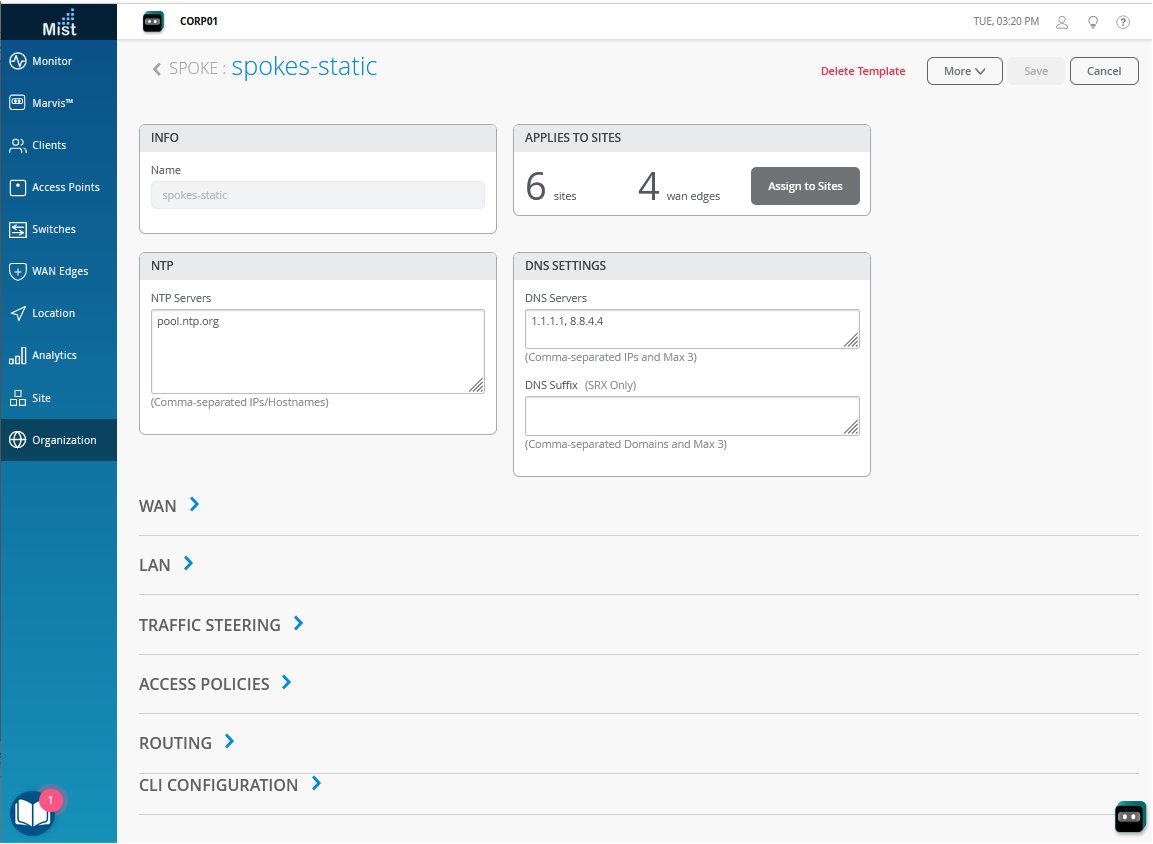Task 5: Configure WAN Edge Templates
The WAN Edge template is where you connect the various elements we’ve constructed so far, as well as define common spoke characteristics including WAN interfaces, DHCP servers, traffic steering rules, and access policies, and then apply these configurations to the WAN Edge devices.
In this task, we’ll set up two templates for the WAN Edge spokes. We’ll bind both to our site, where they will pick up the overlay, application, and user information we configured. At the same time, the site will resolve the variables we use in the template.
Many of the template elements will be familiar from the Hub Profiles we just created – LAN, WAN, Traffic Steering, and Access Rules. The difference is that whereas the hub profile attaches to a specific hub only, we create the WAN Edge Template for the spoke devices, and attach them to the site.
At the end of this task, we’ll have connected the various spoke users to the applications they can access on the hub (with its separately defined WAN links and overlay), defined the path that the network traffic will take between the spoke and hub, and applied our security policies to those flows.
To configure a template for the WAN Edge,
- In the Juniper Mist menu, click Organization > WAN | WAN Edge Templates. A list of existing templates, if any, appears.
- Click the Create Template button in the upper right corner.
- In the box that appears, give your template a name (we use spokes-static in this example) and select Spoke as the type.
- Click the Create button. The WAN Edge template appears, as shown in the
figure below.

- Under NTP, enter the hostname or IP address of the NTP server(s) you want the spoke to use. Here, we use pool.ntp.org , a virtual, global cluster of public times servers.
- Likewise, under DNS Settings, enter the hostname or IP address of the DNS server(s) you want the spoke to use for the domain name resolution of hosts on the Internet. Here, we use 8.8.4.4 and 1.1.1.1, which are public DNS servers.
- (Optional) Specify up to three domain suffixes. These will be automatically appended, in the order specified, to accommodate unqualified computer names in DNS query.
